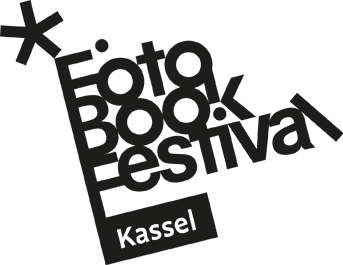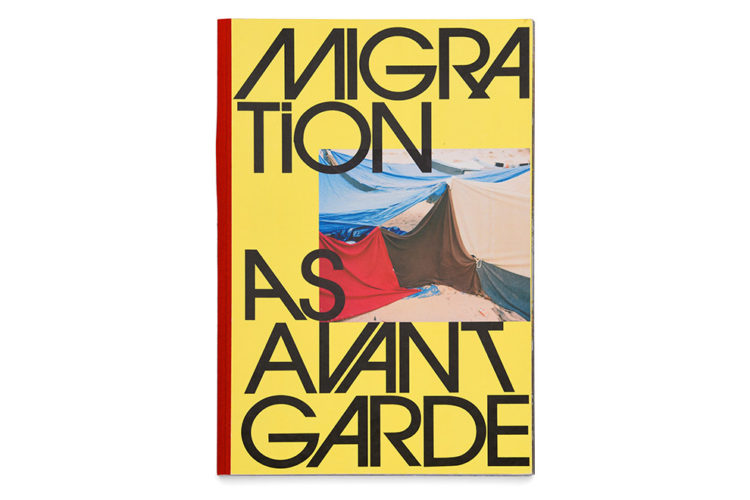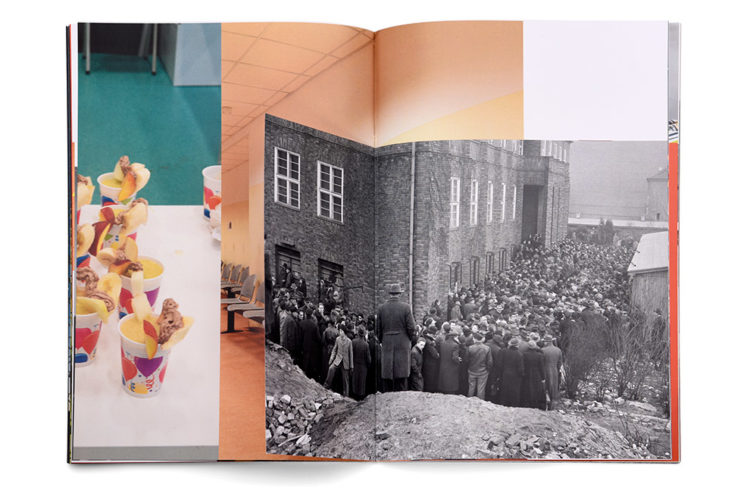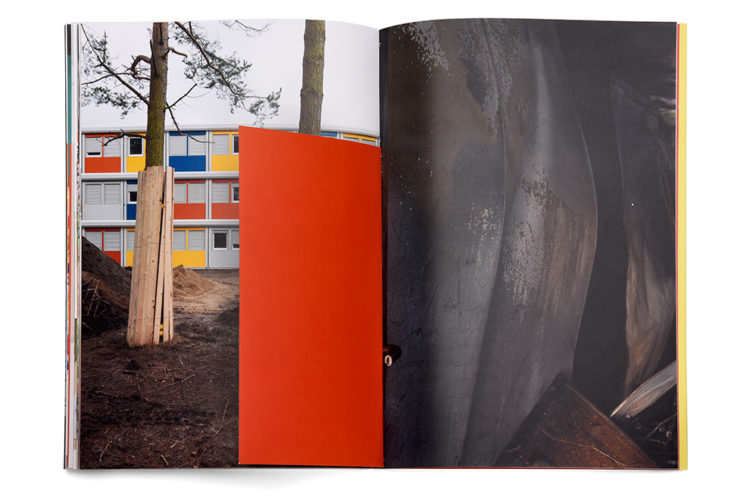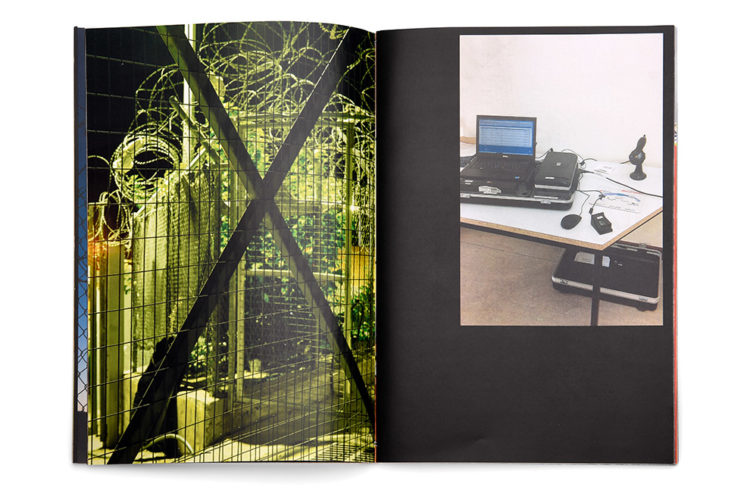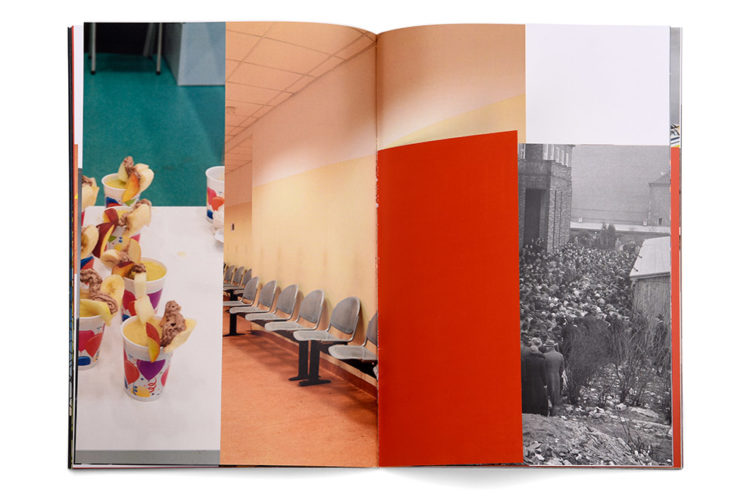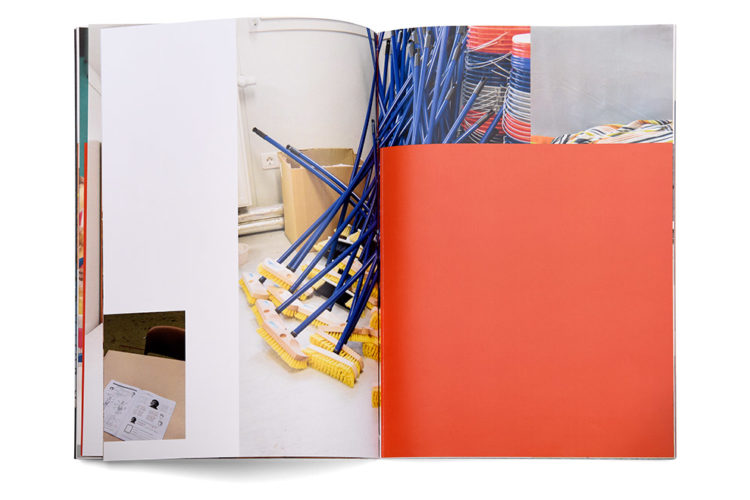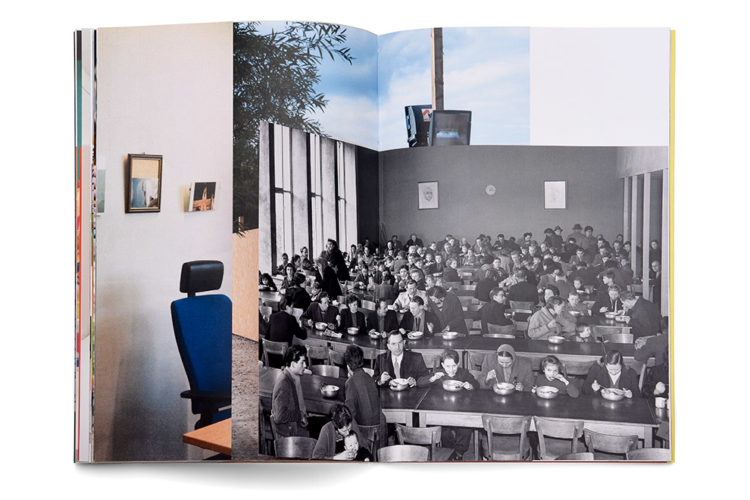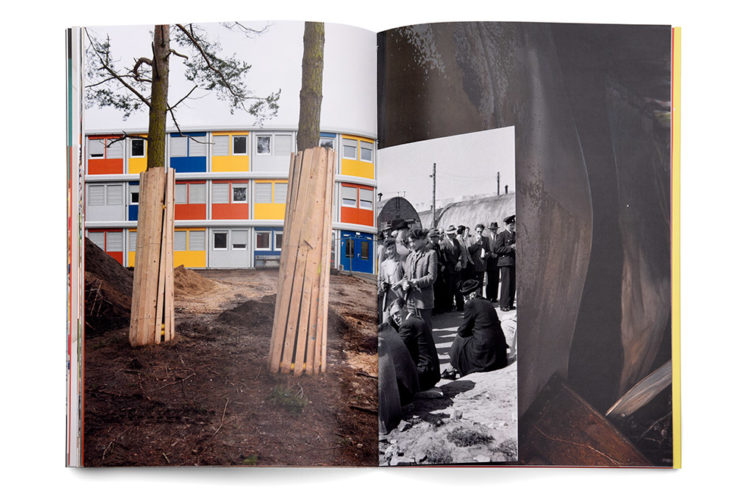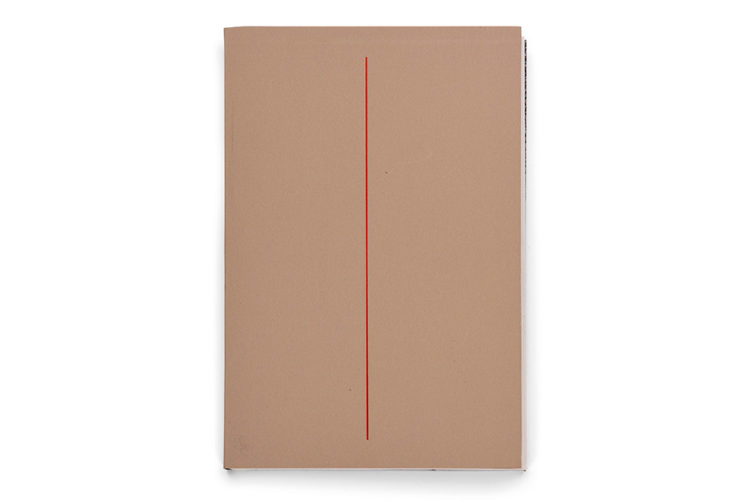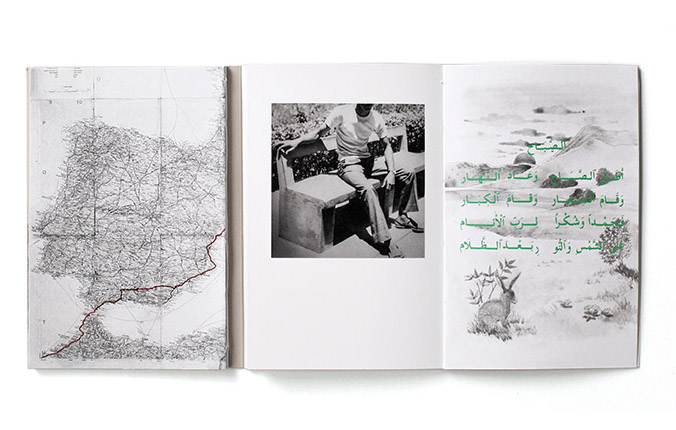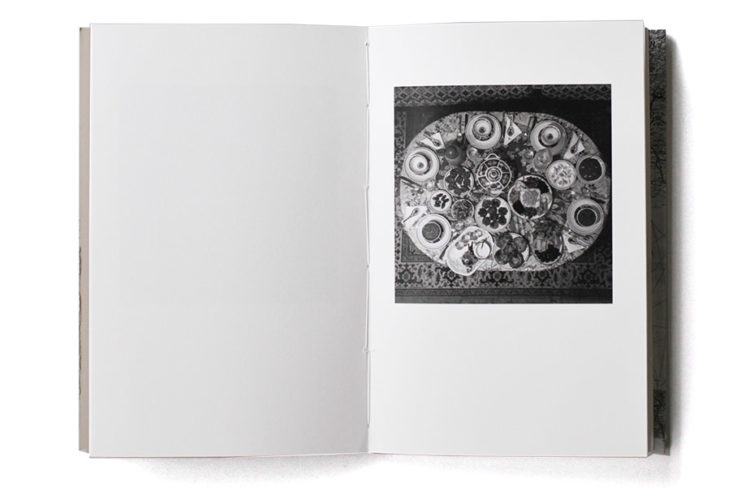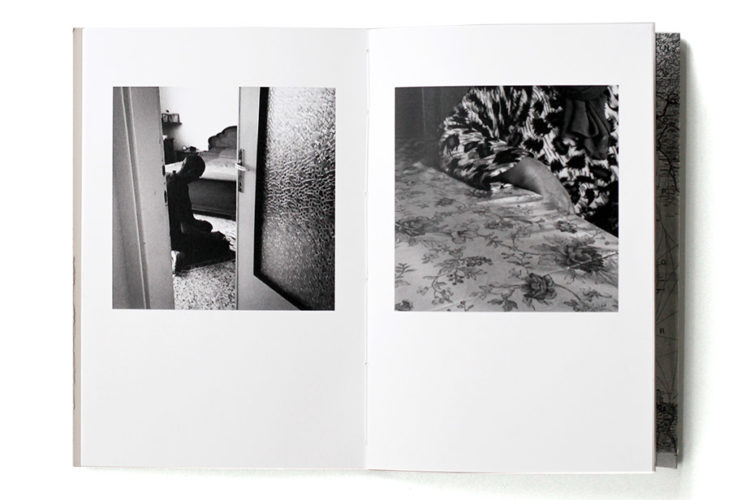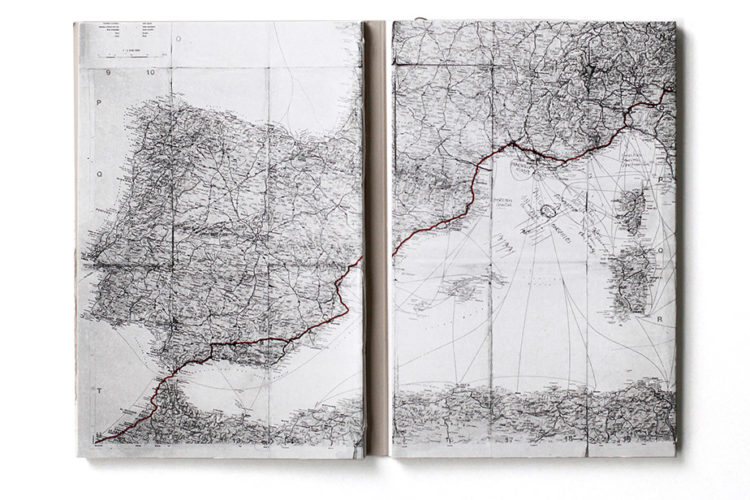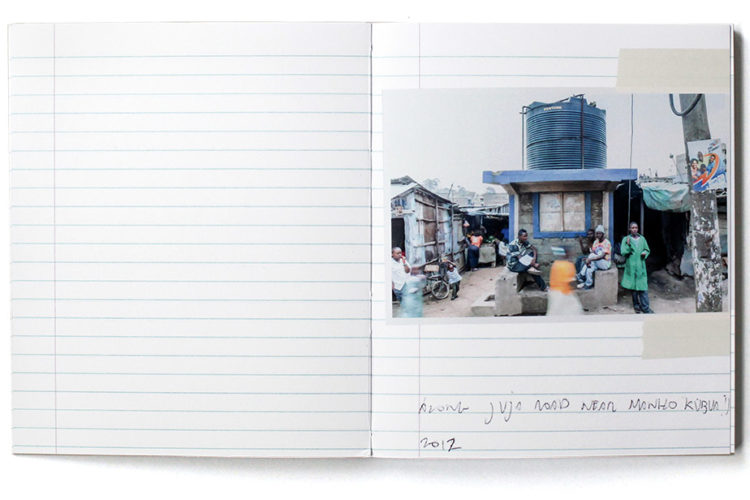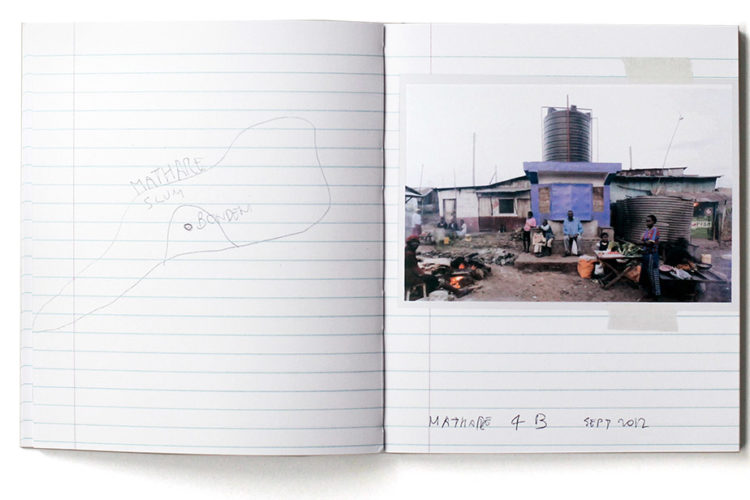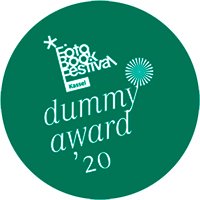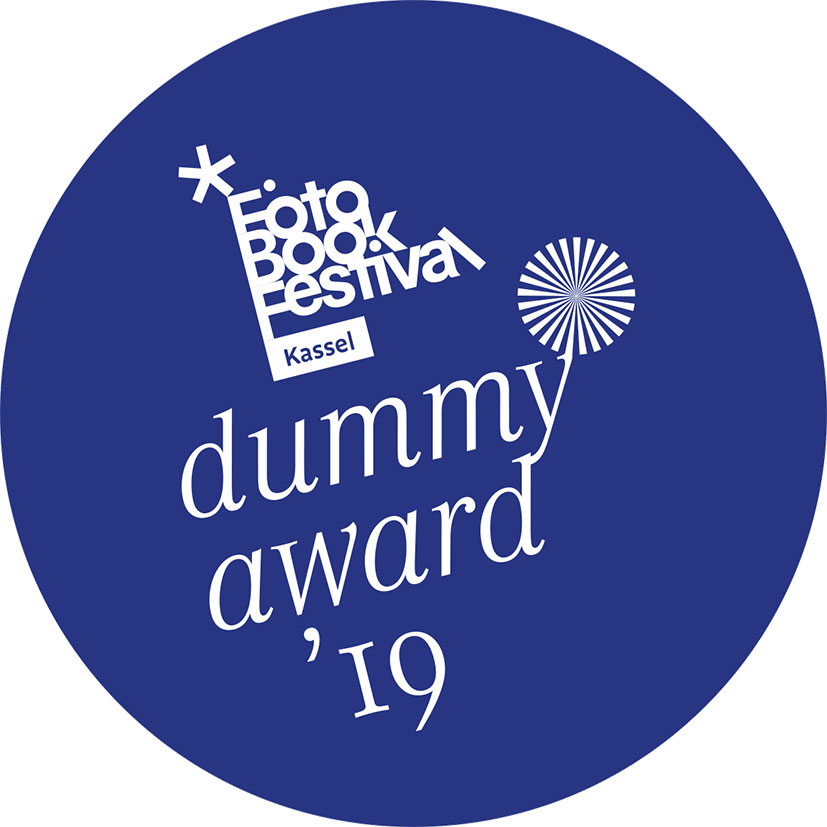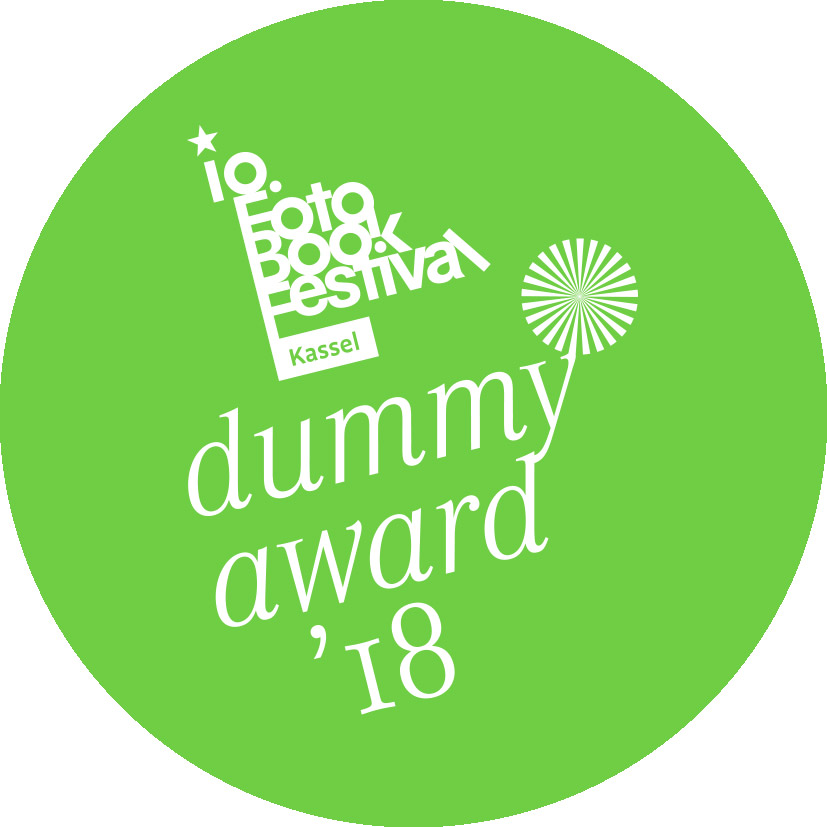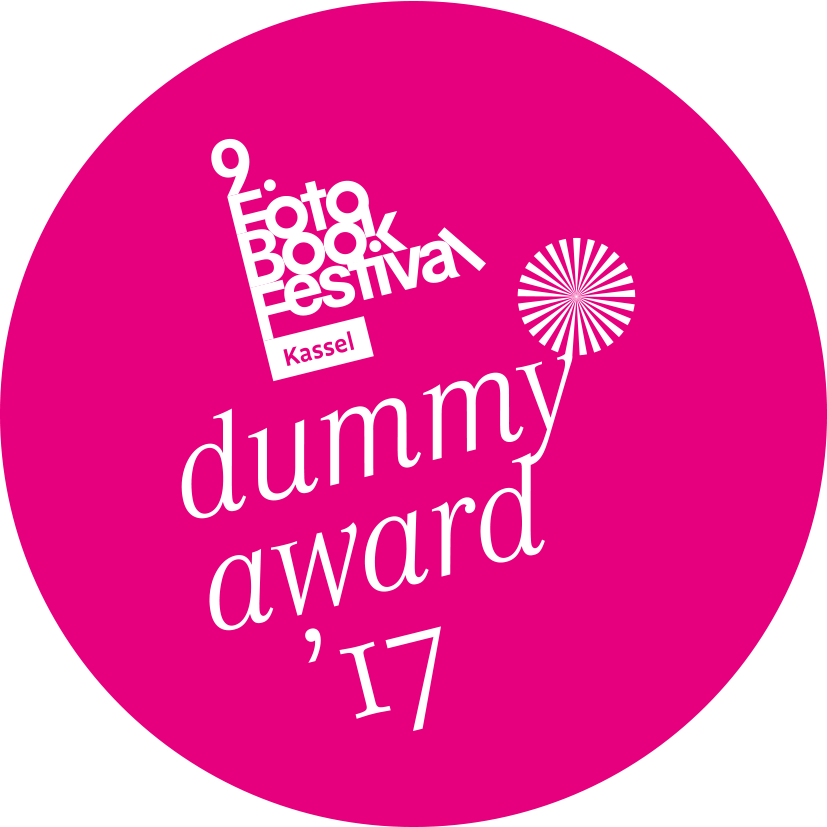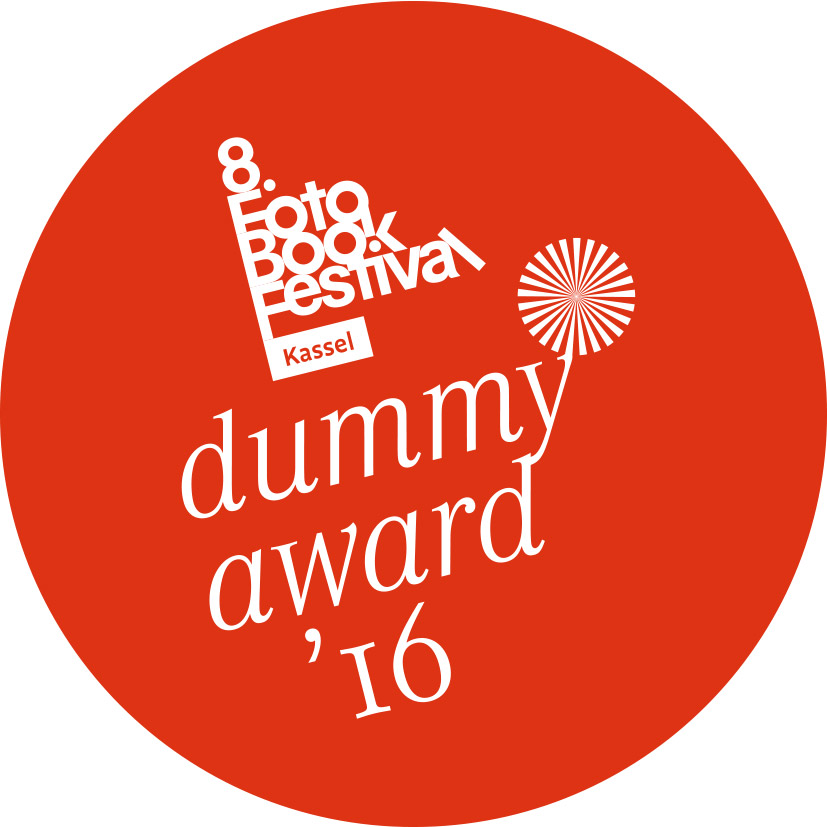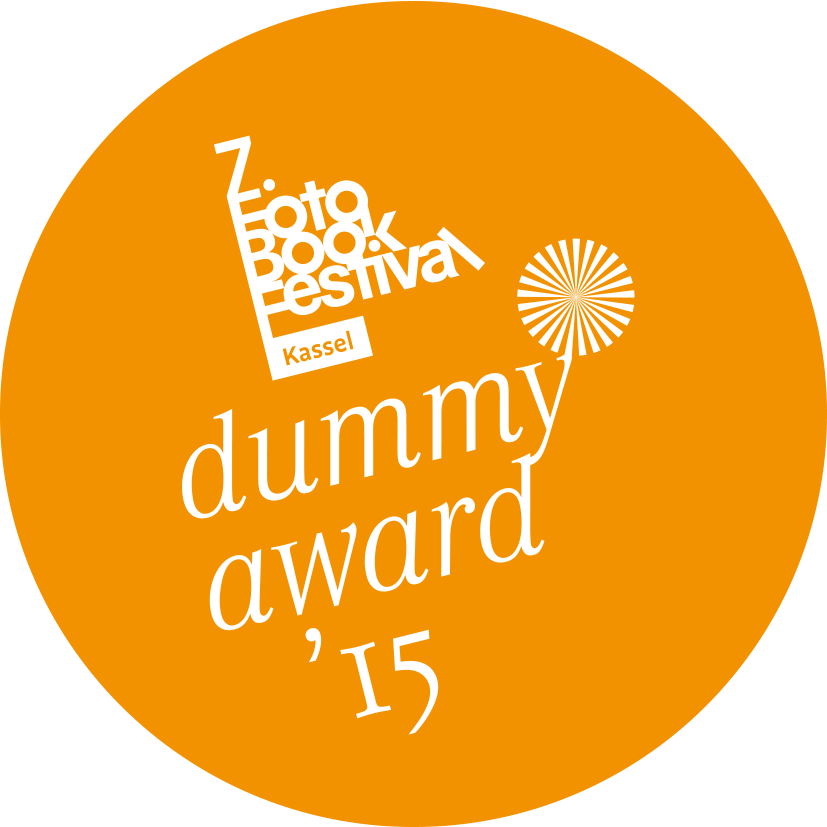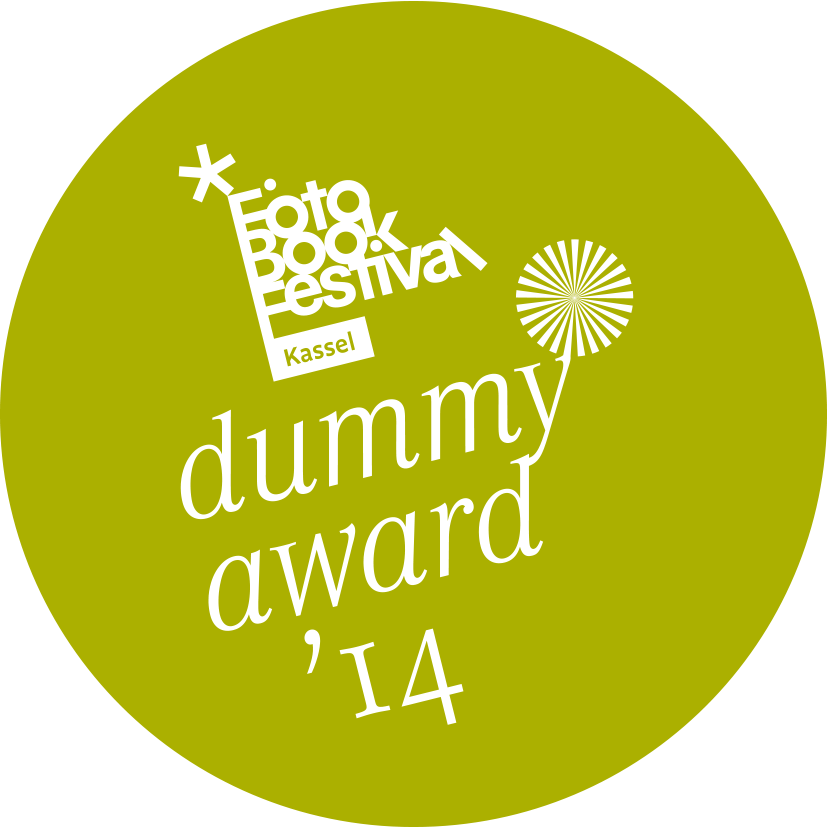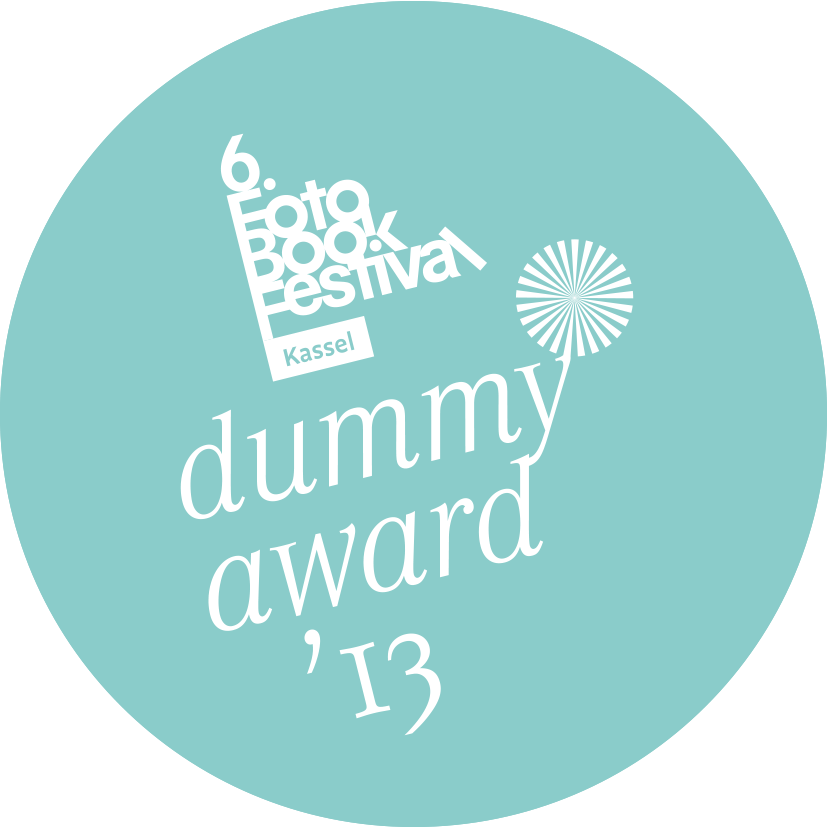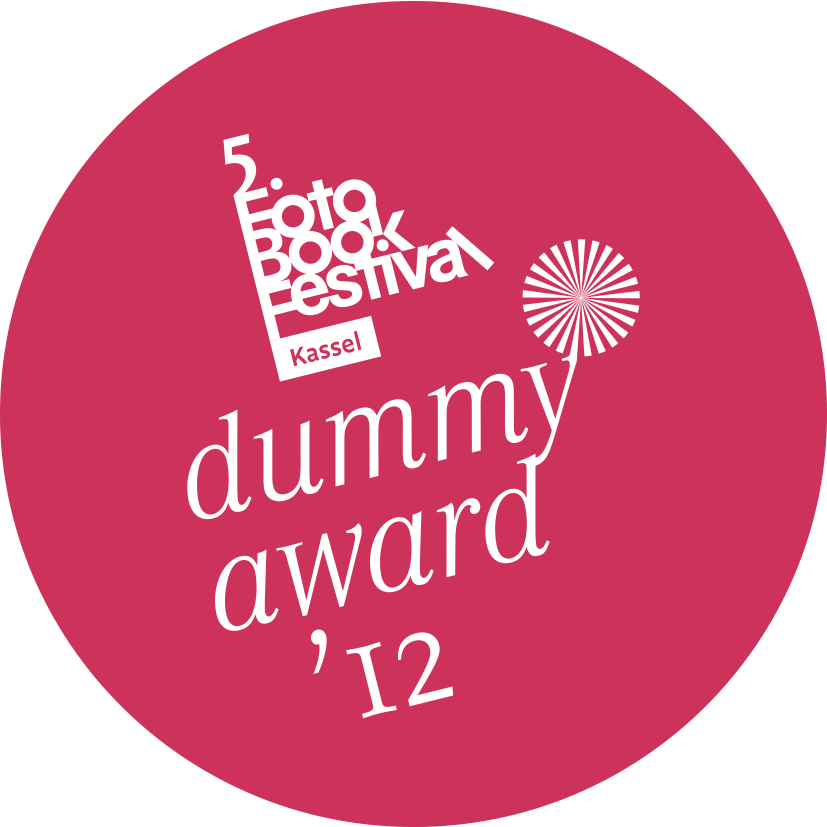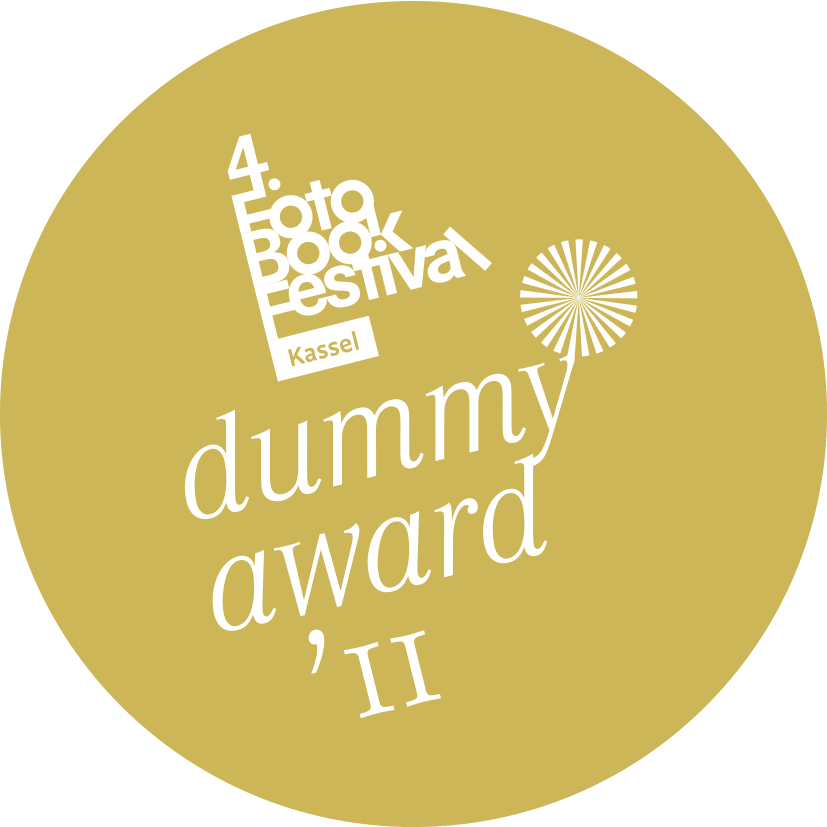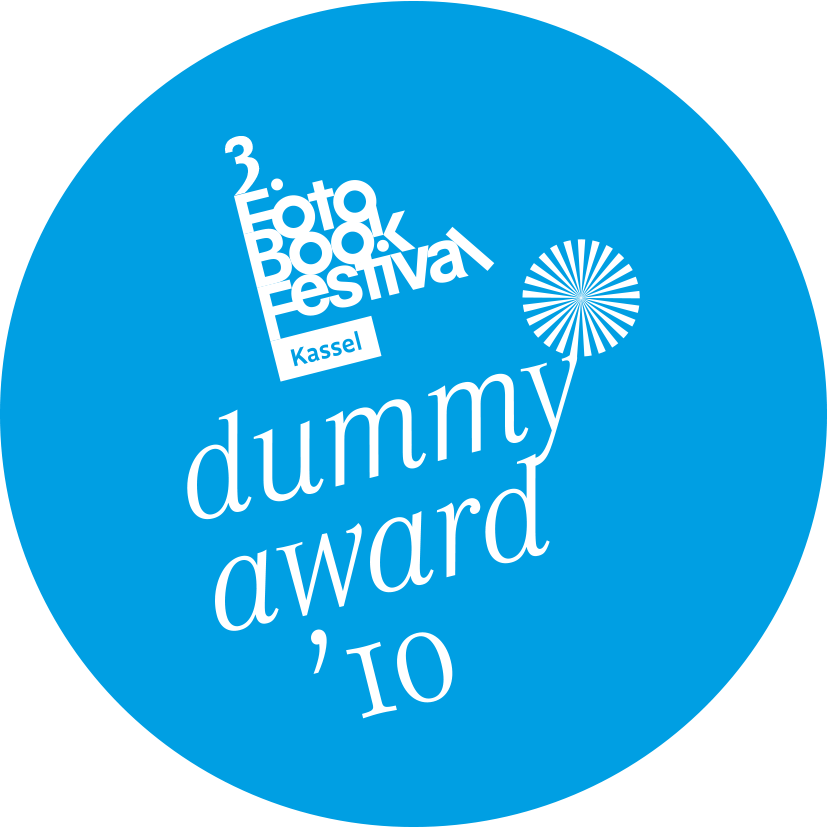In total, 391 photobooks from 46 countries from all over the world, from Bangla Desh to Norway, from Russia to Australia, from Japan to America, from China to Brazil were sent in to the 2018 KASSEL DUMMY AWARD. The shortlist selection resulted in 53 photobooks.
1. Prize
Migration as Avant-Garde by Michael Danner
With Migration as Avant-Garde, Michael Danner takes a remarkable approach: he renders the ways in which migrants are pursuing their hope for a better life. The book aims at presenting a complete journey into migration by showing a system made up of people, natural and artificial barriers and refugee camps. Every page of the book questions the way in which we observe and interpret this contemporary issue. Danner is able to play with different elements and to put images, texts and archives into a specific and strong relationship. The book is multi-layered. It presents a coherent narrative as well as some unusual and brave decisions in terms of layout that stress and foster this multiple reading. If the term “avant-garde” initially seems debatable, it then becomes clear when reading the extracts from a 1943 text by the philosopher Hannah Arendt. We decided on this book for an award because of the very good balance it creates between photography and design, as well as for the narrative approach and the tangible “experience” it is possible to have when browsing through it. There have been many works on migration presented and produced over the course of the last few years, Migration as Avant–Garde really stands out and adds another reading to what has already been said – in some cases very well – about one of the most important and sensitive contemporary challenges. With this work Michael Danner offers excellent material for further discourse and analysis.
Text by Salvatore Vitale, Lausanne.
2. Prize
Hayati by Karim El Maktafi
Hayati is by Karin El Maktafi, born in Italy of Moroccan parents.
In a small booklet, he records his life and travels, combining this family images and documents. He is a skilled photographer with his own ‘voice’, although the idiom of black-and-white photography is familiar. It is not very often that we see an account in photography of a second-generation minority cultural group because parents do not like their children to choose photography as a career. Karim is probably not an exception, but has still produced this sensitive booklet. He has a fantastic eye, especially for light. All the images are carefully cropped and processed and give us a view of life as we seldom see it. A very good story, very much worth seeing!
Text by Corinne Noordenbos, Amsterdam.
3. Prize
Water Tanks in Mathare Slum by Fillipo Romanov
Fillipo Romanov’s great little book Water Tanks in Mathare Slum shows us that a book does not have to big, expensive, conceptually intricate and serious in order to deal with serious issues. Romanov takes us to the Mathare slums of Nairobi and teaches us about the problems of the water situation there by means of simple images and naive drawings, almost like a children’s book!
Text by Morten Andersen, Oslo.
***
Bahadir Aksan »Daffodil«
Taufiqur Rahman Anik (BD) »Modern Photography«
Julia Borissova (RU) »DOM (Document Object Model)«
Alessandra Carosi (IT) »Ruota«
Piergiorgio Casotti, Emanuele Brutti (IT) »INDEX G«
Federico Clavarino (IT) »Hereafter«
Celine Croze (FR) »Nothing Happened«
Michael Danner (DE) »MIGRATION AS AVANT-GARDE«
Paula de Abrantes (ARG) »MIS 15«
Nicolas Delaroche (FR/CH) »First Seen«
Karim El Maktafi (IT/MA) »Hayati«
Theo Elias (SE) »Smoke«
Yoshikatsu Fujii (JP) »Hiroshima Graph – Rabbits abandon their children«
Florian Genz (DE) »WARAGI«
Tamsin Green (UK) »Born of the Purest Parents«
Youval Hai (ISR) »Dust & Scratches«
Monika Hanfland (DE) »Püppi arrived«
Jan Richard Heinicke (DE) »Cornutopia«
Agata Kalinowska (PL) »SCUM«
Oguz Karakütük »Delta«
Özgür Atlagan & Zeynep Kayan (TR) »Kumkuat«
Jiye Kim (KR) »Elephant and Castle«
Koji Kitagawa (JP) »Hello«
Vladimíra Kotra (CZ) »Chiméra«
Holger Krischke, Thomas Haubner and students of University of Fine Arts Münster (DE) »sensor«
Ksenia Sidorova (RUS) »Simplex«
Kevin Kunstadt (USA) »LETTER BOX«
Tomasz Laczny (PL) »DISAPPEARANCE«
Martin Lamberty (D) »My Friends Got Famous«
Verónica Losantos (SP) »Mansilla«
Lucie Marsmann (DE) »Archiv Alto Adige«
Ann Massal (FR) »The Eye of the Cyclops«
Julia Mejnertsen »M.M.«
Mike Osborne (US) »Federal Triangle«
Nicolas Polli (CH) »Ferox the Forgotten Archives 1976 -2010«
TJ Proechel (US) »26 ft 8 inches«
Filippo Romano (IT) »WATER TANKS IN MATHARE SLUM«
Rocco Rorandelli (IT) »Tobacco«
Bianca Salvo (IT) »Time and Again«
Rebecca Sampson (DE) »Apples for Sale«
Muriel Schouten (NL) »Ways of Understanding, Vood«
Johann Süßebecker & Fabian Melchers (DE) »Night People«
Nikita Teryoshin (RU) »Hornless Heritage«
Yulia Tikhomirova (RU-IT) »A Landslide«
Martin Toft (DK) »Te Ahi Kā – The Fires of Oc«
Terttu Uibopuu »(EST/USA) E.S.E.«
Siska Vandecasteele (BE) »Forain, Kaffers en Boerin«
Daniel Vogl (D) »Walter«
Andrew Waits (USA) »Aporia«
Jagoda Wisniewska (PL) »Czarna Madonna«
Ole Witt (DE) »Help Desk – Random Acts of Administration«
Marta Wódz (PL) »High Culture«
Rie Yamada (JP) »Familie werden«
Being part of the jury of the Kassel Dummy Award
Being one of those who judges the best dummy out there puts you in a privileged position. You will be among a group of people who will have insight into some of the most compelling issues that artists are working on, as well as an interesting look into what could possibly become a masterpiece or define a trend. Being part of the jury of the Kassel Dummy Award involves all of this and brings a considerable amount of responsibility with it as well. The process is long, the applications are numerous and the level is high. This means trying to find a good strategy in order to be able to set the best work in the right time, leaving some scope for discussion and feedback. Since the very beginning — or better, first box — me and the other members of the jury noticed that our mission was far from being easy: many interesting projects, many diversified books and approaches to the book. It was exciting to encounter the creativity of many artists who conceive the book as a proper work of art rather than as a container or simply a beautiful object. In this sense, we had a great discussion on the concept of the dummy and how a good layout influences the opinion one has on it. I must say that among all the entries there were only few examples of objects that felt like a “draft”; on the contrary, many of the books were presented with an elaborate design and good printing quality and paper. I, sometimes, found it very hard to judge them without being influenced. According to my concept of a dummy, I want to see a “work in progress”, an object that leaves room for a certain degree of speculation. This said, I must admit that the overall quality of the entries was a perfect mirror of how access to technical supplies and knowledge is becoming easier and easier. But this is not always good. On many occasions I had the feeling that a stronger edit or a different sequence, as well as a different format, would have enhanced a book. Self-publishing is great as soon as skills are shared among professionals. What strategy did I adopt so as to understand what to pick and what not? “Only killers, no fillers”, to quote Frederic Lezmi with which we started the jury session. What do I think makes a book a “killer”? I’ve been trying to focus less on the form and more on the work. A strong conceptual approach to the subject and a functional way to spread it across the pages of the book are a conditio sine qua non for attracting my interest. Then a dash of creativity and a total awareness of the choices do the rest. I’ve been trying to look at books that I felt were complete at the level of the story. Books with a specific and coherent structure. I’ve been trying to read the texts and discuss with the other members of the jury, sometimes I then even changed my mind. The first round was hard, but we made it to a first long shortlist! The second round was harder, in fact. At that stage, all the remaining books were eligible to enter the final shortlist. We went accurately back to all of them, we discussed and shared our thoughts until we selected the last 50. In the end, we all agreed and managed to make a strong shortlist that touches on important topics and different approaches to the photo book. The resulting travelling exhibition will be a valuable place to see some amazing works.
Congratulations to all the artists who made it and
thanks to all the participants.
Salvatore Vitale (Editor in Chief of YET Magazine, Lausanne).
SHORTLIST JURY
Valentina Abenavoli (Akina Books, Istanbul)
Anne-Katrin Bicher (Montag Stiftung, Bonn)
Sonia Berger (Dalpine Publishers, Madrid)
Andrea Schmidt (Verlag Kettler, Dortmund)
Frederic Lezmi (Photographer, The PhotoBookMuseum, Cologne)
Markus Schaden (The PhotoBookMuseum, Cologne)
Salvatore Vitale (Photographer, Editor in Chief of YET Magazine, Lausanne)
Dieter Neubert (Fotobookfestival Kassel, Director, Kassel)
***
FINAL JURY
Valentina Abenavoli, Photographer and Publisher, Akina Books, Istanbul
Morten Andersen, Photographer and Bookmaker, Oslo
Pierre Bessard, Publisher, Editions Bessard, Paris
Matthias Koddenberg, Verlag Kettler, Dortmund
Dana Lixenberg, Photographer, Amsterdam/ New York
Susan Meiselas, Photographer, Magnum Foundation, New York
Corinne Noordenbos, Photographer and Educator, Amsterdam
Salvatore Vitale, YET Magazine, Lausanne
***

